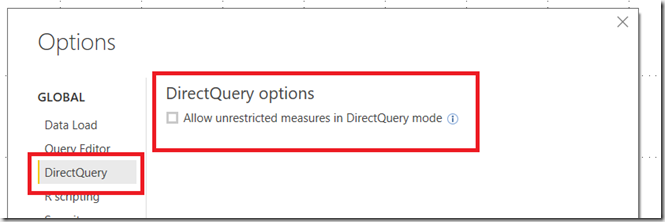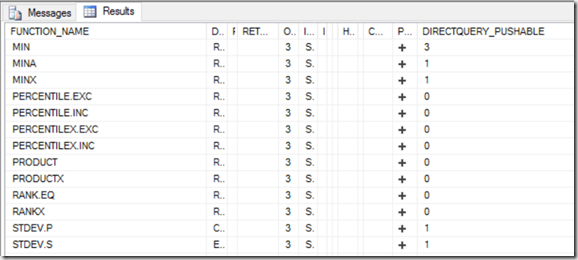DAX Functions, DirectQuery And Unrestricted Measures
Reposted from Chris Webb's blog with the author's permission.
If you use Power BI to connect to a data source such as SQL Server in DirectQuery mode, you’ll find that by default you cannot use the complete range of DAX functions inside your calculations. For example, here’s a screenshot from Power BI Desktop in DirectQuery mode with a measure where I’m trying to use the RankX() function:
Whenever you get an error message like “Function ‘RANKX’ is not supported in DirectQuery mode” you know you’re trying to use a DAX function that isn’t allowed by default in DirectQuery mode.
Why does this limitation exist? Well, as the documentation points out here:
…this is done for performance reasons. In Power BI, every time you interact with a report (by opening it, clicking on a slicer etc) a series of DAX queries is sent back to the Data Model to get the data needed by the report. In DirectQuery mode, all of these DAX queries – including any calculations – are translated into queries that are sent back to the data source. If that data source is SQL Server, then Power BI generates SQL queries. Not everything that you can do in a DAX calculation can be translated back into efficient SQL, so to prevent you from accidentally building calculations that will perform badly in DirectQuery mode Power BI tries to prevent you from using any DAX functions that it thinks it can’t generate efficient SQL for.
You can remove this restriction by clicking File/Options and Settings/Options to open the Options dialog and then going to the DirectQuery pane and selecting “Allow unrestricted measures in DirectQuery mode”:
There is no documented list of functions that work in DirectQuery mode (probably because it might change with each release) but there is a way to get one. Using SQL Server Management Studio it is possible to connect to Power BI Desktop and run DMV queries against the Power BI Data Model. If you query the MDSCHEMA_FUNCTIONS DMV like so:
select * from $SYSTEM.MDSCHEMA_FUNCTIONS
You’ll see that it returns a list of all of the DAX and MDX functions understood by Power BI; the last column, called DIRECTQUERY_PUSHABLE contains information used by Power BI to decide whether a calculation is available in DirectQuery mode or not:
[At the time of writing this query doesn’t work in DAX Studio for some reason, I think because of the data returned in the PARAMETERINFO column, but if you try to restrict the rows or columns returned by the DMV in any way the DIRECTQUERY_PUSHABLE column only returns empty values. This is why I say you have to use SQL Server Management Studio]
For the DAX functions in the list, if DIRECTQUERY_PUSHABLE is 0 then it is not available in DirectQuery mode by default. If it returns 1 then it is available in measures but not calculated columns; if it returns 3 it is available in both measures and calculated columns (I guess 2 means that it is only available in calculated columns, but there are no functions with this property value right now). However this is not a definitive guide to whether a function is actually ‘pushable’ or not: some functions could be pushable in some scenarios, or with certain combinations of parameters, and not others and the UI may perform additional checks to decide whether a function can be used.
Thanks to Jeffrey Wang and Marius Dumitru for answering my questions about this.
By the way, if you’re reading this, you might also be interested in this post I wrote a while back on the functionality available in the Query Editor in DirectQuery mode:
https://blog.crossjoin.co.uk/2015/11/11/power-bi-directquery-mode-not-just-ssas-directquery-v2-0/
UPDATE – as Marco points out in his comments below, there *is* documentation on which functions are supported in DirectQuery mode now. I just didn’t know about it…
 |
Chris has been working with Microsoft BI tools since he started using beta 3 of OLAP Services back in the late 90s. Since then he has worked with Analysis Services in a number of roles (including three years spent with Microsoft Consulting Services) and he is now an independent consultant specialising in complex MDX, Analysis Services cube design and Analysis Services query performance problems. His company website can be found at http://www.crossjoin.co.uk and his blog can be found at http://cwebbbi.wordpress.com/ . |



